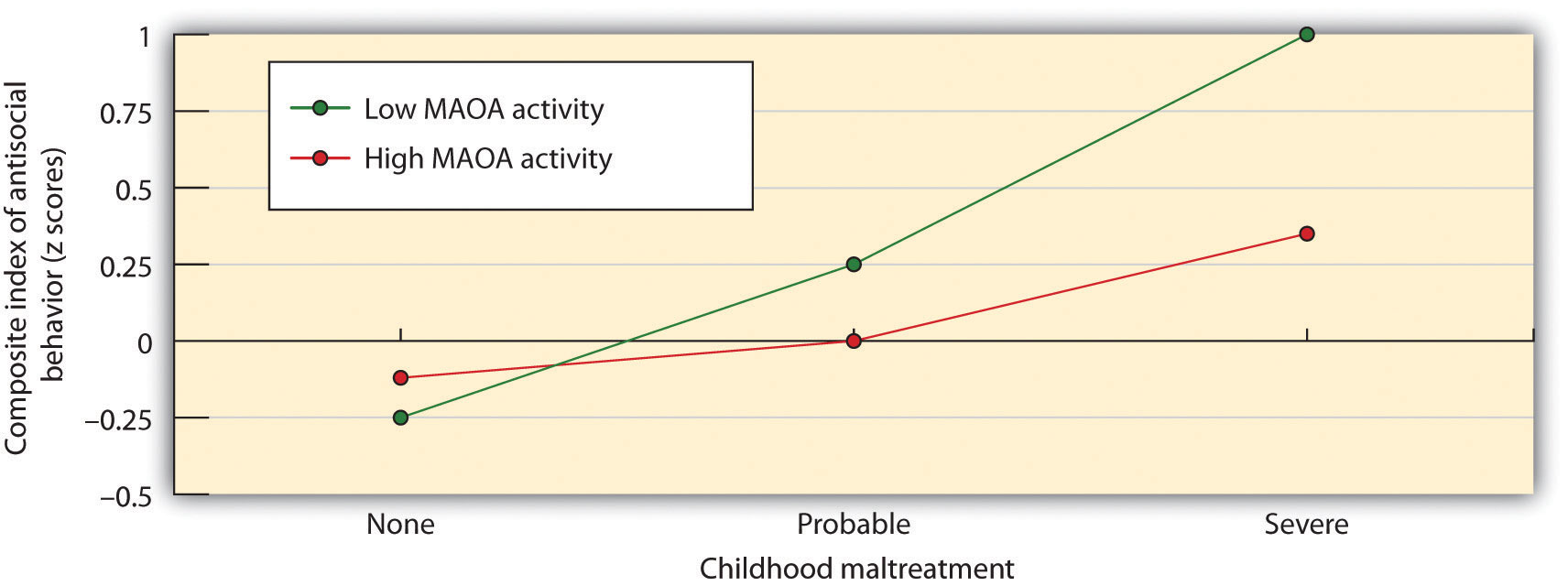A belief in the innate aggressive tendencies of human beings—that the ability to be aggressive toward others, at least under some circumstances, is part of our fundamental human makeup—is consistent with the principles of evolutionary psychology. After all, the goal of maintaining and enhancing the self will in some cases require that we prevent others from harming us and those we care about. We may aggress against others because it allows us to gain access to valuable resources such as food and desirable mates or to protect ourselves from direct attack by others. And we may aggress when we feel that our social status is threatened. Therefore, if aggression helps with either our individual survival or in the survival of our genes, then the process of natural selection may well cause humans, as it would any other animal, to be aggressive. Human beings need to be able to aggress in certain situations, and nature has provided us with these skills (Buss & Duntley, 2006). Under the right situation, almost all of us will aggress.
However, just because we can aggress does not mean that we will. It is not necessarily evolutionarily adaptive to aggress in all situations. For one, aggressing can be costly if the other person aggresses back. Therefore, neither people nor animals are always aggressive. Rather, they use aggression only when they feel that they absolutely need to (Berkowitz, 1993a). In animals, the fight-or-flight response to threat leads them sometimes to attack and sometimes to flee the situation. Human beings have an even wider variety of potential responses to threat, only one of which is aggression. Again, the social situation is critical. We may react violently in situations in which we are uncomfortable or fearful or when another person has provoked us, but we may react more calmly in other settings. And there are cultural differences, such that violence is more common in some cultures than in others.
There is no doubt that aggression is in part genetically determined. Animals can be bred to be aggressive by breeding the most aggressive offspring with each other (Lagerspetz & Lagerspetz, 1971). Children who are aggressive as infants also are aggressive when they are adults (Coie & Dodge, 1998; Dubow, Huesmann, & Boxer, 2003; Raine, 1993) and identical twins are more similar than fraternal twins in their aggressive tendencies and criminal records. Behavioral genetics studies have found that criminal and aggressive behavior is correlated at about .70 for identical twins but only at about .40 for fraternal twins (Tellegen et al., 1988).
Avsalom Caspi and his colleagues (2002) found evidence for the person-by-situation interaction in determining aggression. They focused on the the influence of a particular genetic factor, the monoamine oxidase (MAOA) gene, located on the X chromosome, that produces an enzyme that influences the production of serotonin, a neurotransmitter that influences mood, appetite, and sleep and that inhibits aggression. Supporting the role of genetics in aggression, they found that individuals who had lower levels of activity of this gene were more at risk to show a variety of aggressive behaviors as adults. However, they also found that the genetic factor was only important for children who had also been severely mistreated. This person-by-situation interaction effect is shown in Figure 9.4. Although much more research is needed, it appears that aggressive behavior, like most other behaviors, is affected by an interaction between genetic and environmental variations.

Caspi and his colleagues (2002) found evidence for a person-by-situation interaction regarding the role of genetics and parental treatment in aggression. Antisocial behavior and aggression were greater for children who had been severely maltreated, but this effect was even stronger for children with a gene variation that reduced the production of serotonin.
Evolutionary principles suggest that we should be less likely to harm those who are genetically related to us than we are to harm others who are different. And research has supported this finding—for instance, biological parents are much less likely to abuse or murder their own children than stepparents are to harm their stepchildren (Daly & Wilson, 1998, 1999). In fact, these researchers found that preschool children living with a stepparent or foster parent were many times more likely to be murdered by their parent than were children who lived with both biological parents.
- 6258 reads






